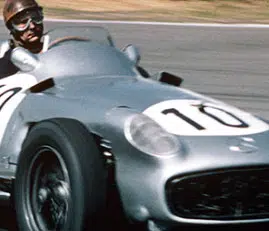2011 F1 World Championship
- 2011
- F1
- F1 World Championship
Pirelli replaced Bridgestone as F1’s exclusive tyre supplier with a brief to produce rubber that would degrade during a race stint. Aligned to the introduction of the Drag Reduction System that allowed a car following one second behind a rival to run less rear wing on the following straight, the rule-makers effectively eased the previous difficulty for drivers to overtake. KERS was also reintroduced in 2011.
F1 has long ignored politics and the outside world but the season began late after the opening round was postponed (and finally cancelled) due to unrest in Bahrain. When the season finally began, the racing was close and exciting thanks to the new rules.
Sebastian Vettel continued to hold sway albeit by a reduced margin on race day as he carefully conserved his fragile Pirellis. He understood the tyres quicker than others, qualified on pole position for all-but-four races and won 11 times to retain the title with ease. Mark Webber struggled to manage his tyres on the sister Red Bull and his only victory came in the Brazilian finale after Vettel had been delayed.
Off the pace in pre-season, McLaren modified its exhaust system (this year was all about “blown exhausts” as double diffusers were banned) in time for the first race and emerged as Red Bull’s closest challengers. Lewis Hamilton endured an inconsistent campaign that mirrored issues in his private life. His naturally aggressive and exciting style did not fit well with this new tyre management era. Initially Vettel’s closest challenger, he won three times but had excessive contact with others as he faded to fifth overall.
Jenson Button continued to impress at McLaren with victory in Canada (having survived Hamilton crashing into him and then coming from the back of the field) was the best of his own three wins. This was arguably Button’s finest season. He became the first team-mate to beat Hamilton over an entire season as he finished as championship runner-up.
Ferrari again failed to produce a package worthy of Fernando Alonso’s talents. He won at Silverstone and featured more often than the F150 Italia should have allowed despite disappointing grid positions. Felipe Massa spent the season in Alonso’s shadow with fifth his best finish and his Ferrari future in doubt.
Nico Rosberg led in China and Belgium and generally out-qualified esteemed Mercedes-Benz colleague Michael Schumacher. Fifth was also his best result of the season while Schumacher challenged for the lead in changeable Canadian conditions before finishing fourth.
Much was expected of Robert Kubica and Renault for initial testing was promising. However, the Pole was seriously injured in a minor rally before the start of the season and the team gradually lost its way. Vitaly Petrov finished a fine third in Australia and Kubica’s replacement Nick Heidfeld repeated that result in Malaysia. Heidfeld was eventually dropped in favour of Bruno Senna who failed to convince that he would become a top F1 driver.
Debutant Sergio Perez eclipsed the more experienced Kamui Kobayashi at Sauber although he was sidelined following a high-speed accident at Monaco’s chicane. Another rookie to impress was Force India’s Paul di Resta who qualified sixth at Silverstone and finished in that position in Singapore. Team-mate Adrian Sutil recovered from a slow start and legal troubles following a night club incident in China (he was eventually found guilty of bodily harm) to overhaul the Scot and finish ninth overall.
Jaime Alguersuari and Sebastien Buemi regularly scored points for Toro Rosso as the Red Bull-owned team beat Williams to eighth overall. It was the worst season so far for the latter with a pair of ninth place finishes delivering the only points of Rubens Barrichello’s final F1 season.





